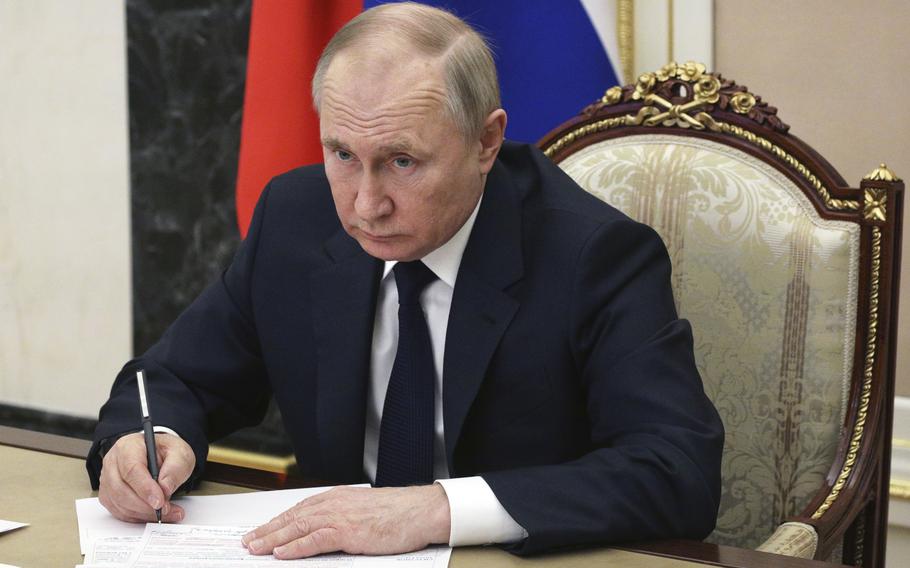
Russian President Vladimir Putin chairs a meeting with members of the government via teleconference in Moscow, Thursday, March 10, 2022. (Mikhail Klimentyev, Sputnik, Kremlin Pool Photo via AP)
The Russian government may be headed for its first foreign debt default since the Bolshevik Party shocked Western investors in 1918 by refusing to repay the borrowings of Czar Nicholas II.
At issue is a $117 million interest payment, which Russia must make Wednesday on two U.S. dollar bonds issued several years ago.
Russian Finance Minister Anton Siluanov told the RIA Novosti news agency on Wednesday that the dollars might not reach foreign bondholders because the government’s foreign currency accounts were frozen by U.S. sanctions.
Russia would then attempt to pay in rubles, rather than dollars as required by the terms of the two government bonds, Siluanov told Tass, another state-owned Russian news outlet, earlier this week. But if the government of President Vladimir Putin fails to deliver the required dollars within a 30-day grace period, the country would officially be in default, according to Fitch, the credit rating agency.
The looming default underscores Moscow’s pariah status in the wake of its Feb. 24 invasion of Ukraine. Russian financial markets have been shuttered for nearly three weeks. Foreign corporations have exited the country. And now Russia’s government bonds - just last month widely traded global assets - are being shunned.
“The sanctions, broadly speaking, have been an attempt to isolate Russia from the global economy and financial system in an unprecedented way - and they have succeeded,” said Blaise Antin, managing director of the emerging markets group at TCW, a Los Angeles-based investment firm.
By itself, a Russian government default is unlikely to have major repercussions. Flush with revenue from oil and gas exports, the government does not need to borrow. And foreign investors are owed only about $62.5 billion, including $21.5 billion that requires repayment in dollars and euros, according to the Institute of International Finance, an industry association.
But a sovereign default could lead to a default by Russian corporations on their borrowings, which are roughly four times greater than the amount the Russian government owes, according to William Jackson, an economist with Capital Economics in London.
Individual financial institutions - including BlackRock and Pimco - also will be forced to absorb losses on their bond holdings. Some Russian government securities now trade for roughly 20 cents on the dollar.
Russia already has failed to make some required payments to foreign investors on bonds issued in rubles. Earlier this month, the government instead deposited the funds in its National Settlement Depository. The Central Bank of Russia has blocked the money from being transferred to investors’ accounts.
Fitch says that move will constitute a default once the 30-day grace period expires.
The Treasury Department issued guidance earlier this month, allowing U.S. investors to receive interest payments on Russian debt through May 25.
Global banks have $121.4 billion at stake in Russia, according to the Bank for International Settlements in Basel, Switzerland. Banks in France, Italy and Austria would be hit hardest if Russian banks and corporations fail to make their loan payments.
The current debt struggles pose an apparent contrast with Russia’s 1998 financial crisis. Less than a decade after the collapse of the Soviet Union, Moscow then was eager to secure a place in the global financial system. Amid a currency collapse, then-President Boris Yeltsin prioritized payments to foreign creditors while the government defaulted on its ruble obligations.